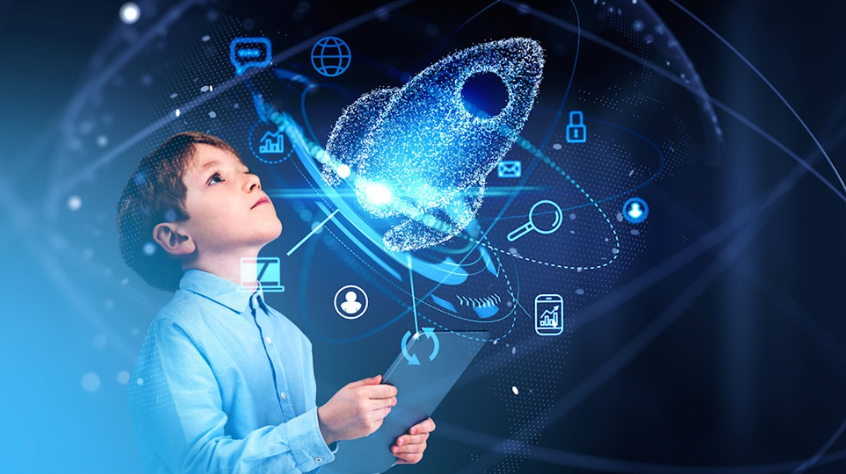Education is at the heart of human progress, and today, technology is revolutionizing how we learn and teach. From interactive digital classrooms to AI-driven personalized instruction, technology is reshaping education to be more accessible, engaging, and effective. This transformation isn’t simply about swapping out chalkboards for screens—it’s about creating a dynamic, inclusive learning environment for everyone, everywhere. In this article, we’ll explore the many ways technology is transforming education and learning, from groundbreaking tools to emerging trends, challenges, and opportunities.
Introduction to Technology in Education
Technology in education encompasses digital tools, platforms, and systems designed to facilitate teaching and learning. With innovations such as laptops, tablets, the internet, and software applications, education has moved far beyond traditional methods. Today, technology empowers students and educators alike to connect, collaborate, and customize learning experiences like never before.
See also: How Emerging Technologies Are Changing Our Daily Lives
A Brief History: Education Before and After Technology
Historically, education was confined to physical classrooms, textbooks, and face-to-face instruction. The late 20th century introduced computers and the internet, opening doors to new teaching methods and information access. This shift laid the foundation for today’s tech-driven classrooms and e-learning platforms.
Digital Classrooms: The New Learning Environment
Modern classrooms now incorporate smartboards, projectors, and digital content that make lessons interactive and multimedia-rich. This shift caters to diverse learning styles, encouraging student participation and deeper understanding.
E-Learning Platforms and Online Courses
Platforms like Coursera, Khan Academy, and Udemy have democratized access to education. Learners worldwide can now enroll in courses from top institutions at their convenience, breaking geographical and economic barriers.
Personalized Learning Powered by AI
Artificial intelligence (AI) and machine learning analyze student progress to tailor content, ensuring each learner receives a customized education that fits their unique pace and style, improving retention and performance.
Gamification: Learning Made Fun
By integrating game-like elements such as points, badges, and leaderboards, educators make learning engaging and motivating, helping students develop skills while enjoying the process.
Virtual and Augmented Reality in Education
Virtual reality (VR) and augmented reality (AR) immerse students in experiences that textbooks can’t offer—exploring historical sites, conducting virtual labs, or practicing real-world skills safely in simulated environments.
Mobile Learning: Education Anywhere, Anytime
Smartphones and tablets enable learners to access materials on the go, offering flexibility that supports busy lifestyles and varied learning schedules.
Cloud Computing: Seamless Access and Collaboration
Cloud technology allows students and teachers to store and share resources easily, collaborate in real-time, and access educational content from any device with an internet connection.
Data Analytics: Tracking and Enhancing Performance
Data-driven insights help educators monitor student progress, identify learning gaps early, and implement targeted interventions to improve outcomes.
Collaborative Tools and Social Learning
Applications like Google Classroom and Microsoft Teams facilitate group projects and peer interaction, fostering teamwork and communication skills vital for the 21st century.
Accessibility and Inclusion Through Technology
Assistive technologies like screen readers, speech-to-text, and adaptive hardware ensure students with disabilities have equitable learning opportunities.
The Flipped Classroom Model
Technology enables students to learn new content at home through videos and quizzes, freeing classroom time for interactive discussions and hands-on activities, enhancing understanding.
Educational Apps: Personalized Skill Building
With thousands of apps available, students can practice languages, coding, math, and more, engaging with material independently and interactively.
Digital vs. Traditional Textbooks
Digital textbooks are not only cost-effective and easily updated but also include interactive elements like videos and quizzes, offering a richer learning experience.
Changing Teacher Roles and Training
Teachers are evolving from sole knowledge providers to facilitators and mentors, requiring ongoing professional development to effectively integrate technology in classrooms.
Challenges in Technology Integration
Despite the benefits, schools face hurdles such as limited infrastructure, digital literacy gaps, resistance to change, and funding constraints that slow down adoption.
Cybersecurity and Privacy Concerns
As education becomes more digital, protecting student data and ensuring privacy is paramount for maintaining trust and safety.
Bridging Global Education Gaps
Remote learning and mobile connectivity extend education to underserved communities, reducing disparities and fostering worldwide access to knowledge.
Impact on STEM Education
Interactive simulations, coding platforms, and robotics kits are making science, technology, engineering, and math more engaging and accessible, encouraging more students to pursue STEM careers.
The Future of Exams and Assessments
Technology is transforming assessments with online exams, AI-based proctoring, and instant feedback systems that provide timely insights into student learning.
Lifelong Learning in a Tech-Driven World
Technology supports continuous education, allowing adults to upskill and reskill flexibly, crucial in today’s rapidly evolving job market.
How Parents Can Support Tech-Based Learning
Parents play an essential role by fostering healthy screen habits, providing guidance, and creating supportive home learning environments that complement digital education.
Real-World Success Stories
Numerous schools and districts worldwide have successfully integrated technology, showcasing improvements in student engagement, performance, and accessibility.
Conclusion: Embracing the Future of Education
Technology’s role in education is not just expanding—it’s evolving. As innovations continue to emerge, they promise more personalized, inclusive, and effective learning experiences that will empower learners globally. Embracing these advancements with thoughtful planning and equity in mind will shape a brighter future for education.
Frequently Asked Questions (FAQs)
Q1: How does technology enhance student engagement?
Technology offers interactive content, multimedia lessons, and gamified learning that keep students interested and motivated.
Q2: Can online learning replace traditional classroom education?
When thoughtfully designed, online learning can be as effective or more, offering flexibility and personalized support.
Q3: What challenges do schools face in adopting technology?
Challenges include funding limitations, teacher training needs, infrastructure gaps, and privacy concerns.
Q4: Will technology replace teachers?
Technology complements teachers but cannot replace the human connection, mentorship, and inspiration they provide.
Q5: How does technology support students with disabilities?
Assistive technologies enable accessible learning through tools like screen readers, voice commands, and adaptive devices.
Technology is no longer a supplementary part of education—it’s at its core. By harnessing its potential wisely, educators can unlock new learning possibilities and build an inclusive, engaging future for learners everywhere.
